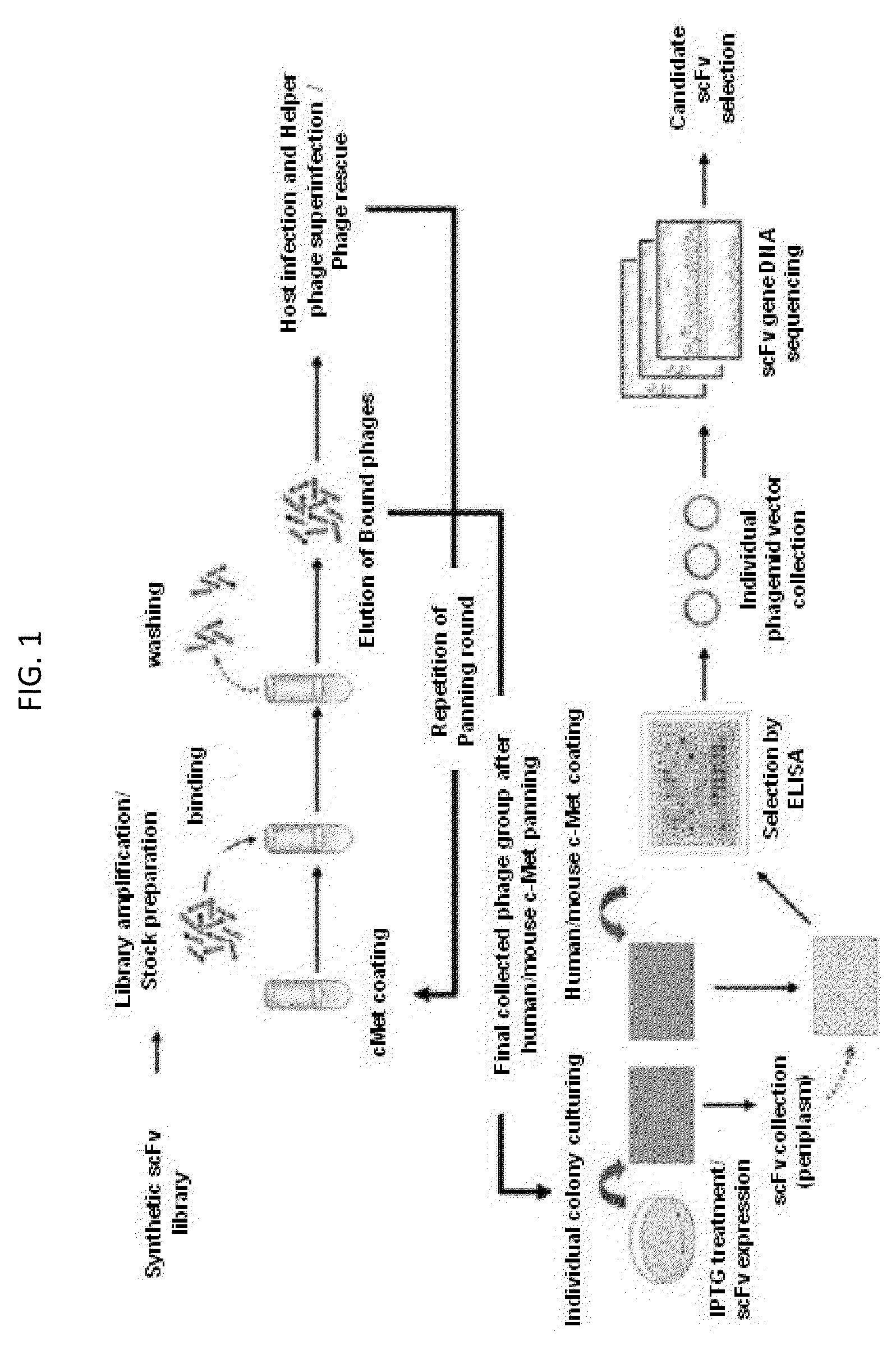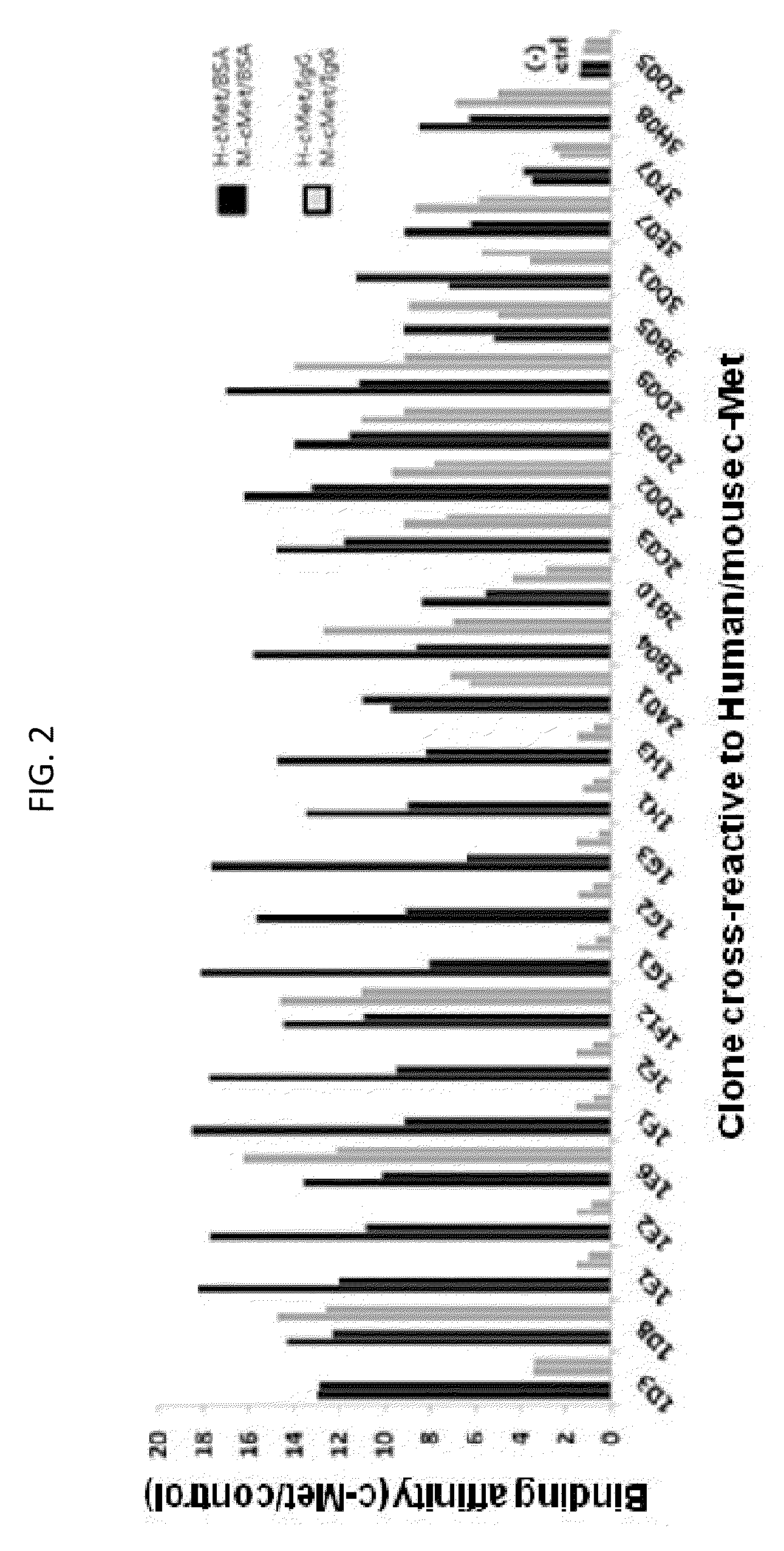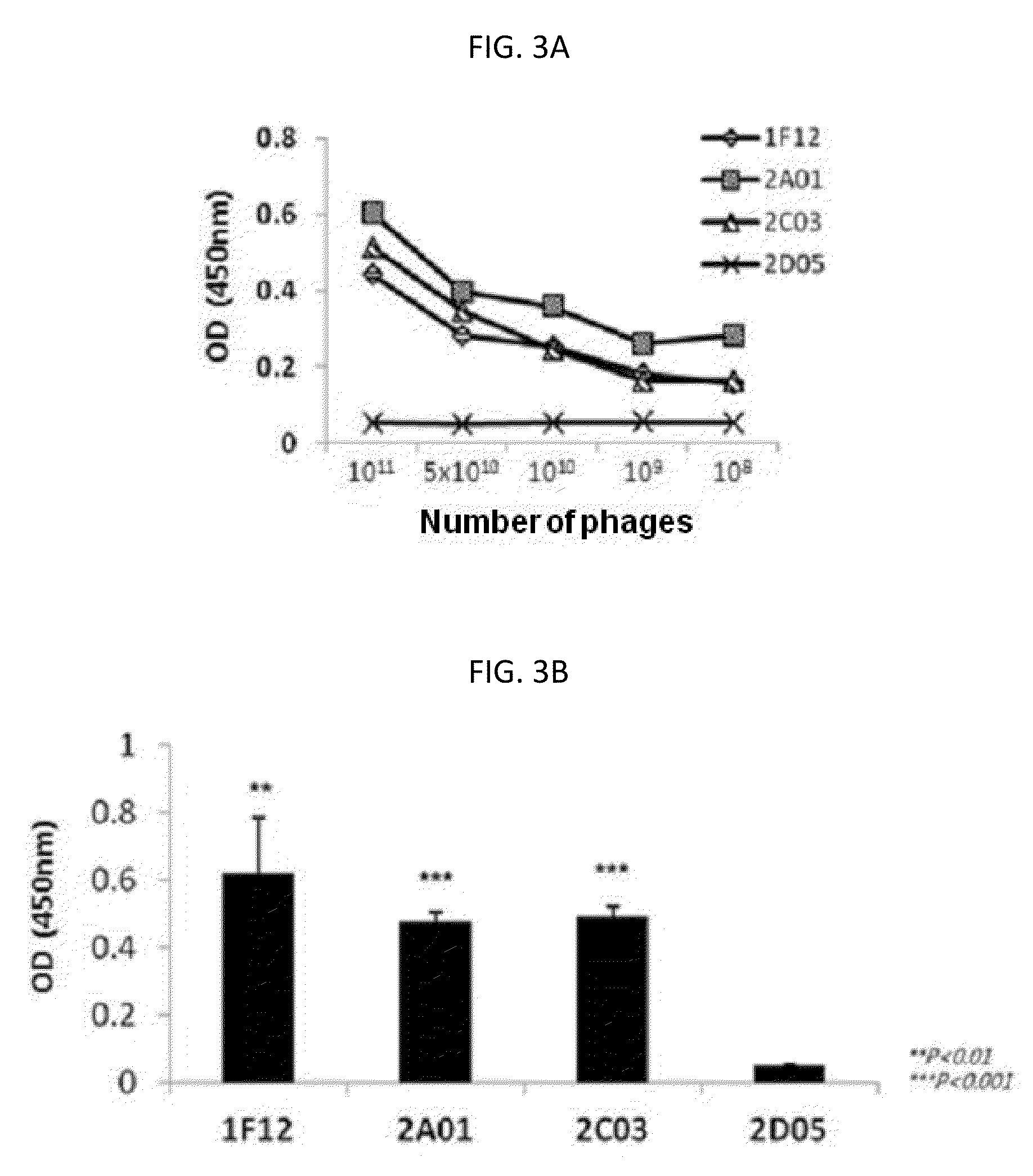Antibodies cross-reactive to human and mouse c-Met and uses thereof
a technology of c-met and antibodies, which is applied in the field of antibodies cross-reactive to human and mouse c-met, can solve the problems of difficult evaluation of the effects of such antibodies, and achieve the effects of preventing and treating cancer, and inhibiting the growth of cancer cells
- Summary
- Abstract
- Description
- Claims
- Application Information
AI Technical Summary
Benefits of technology
Problems solved by technology
Method used
Image
Examples
example 1
Phage Display Screening for Identification of Anti-c-Met scFv Antibody Fragment
[0096]The scFv antibody fragments cross-reactive to human / mouse c-Met were identified through phage display screening by using the existing constructed synthetic scFv phage library (Yang et al., Mol. Cells. 27:225-235, 2009). The phage display screening procedure was as shown in FIG. 1.
[0097]Specifically, for the collection of phagemid vectors in a phage type, which were introduced into E. coli host ER2537, four lower sub-library samples were respectively added to 400 ml of media (SB / ampicillin / 2% glucose), and then cultured for about 2 hours. The host cells cultured until OD600=0.5 were centrifuged at 5,000 g for 20 minutes to remove the supernatant, and then suspended in 400 ml of secondary media (SB / ampicillin). Then, 1012 pfu (plaque forming unit) of helper phage (VCSM13) was added, again followed by culturing for 1 hour. After that, the antibiotic Kanamycin (antibiotic gene introduced into helper pha...
example 2
Sequencing and ELISA Analysis for Anti-c-Met scFv Candidate Selection and ELISA Selection
[0101]After a total of six rounds of panning with mouse / human c-Met were finished, the phage particles collected from the final round of panning were confirmed as colonies in the medium through infection of host cells. These colonies were taken and inoculated in a 96 well plate containing 200 μl of SB / ampicillin media and then cultured (37° C., within 3 hours). After that, for the induction of scFv-pIII protein expression, 1 mM final concentration IPTG was added to each well, followed by culturing overnight at 30° C. After that, the cultured plate was centrifuged to discard the supernatant. Then, for the collection of periplasmic fractions from the cultured cells in each well, the culture plate was treated with 40 μl of TES solution (20% w / v sucrose, 50 mM Tris, 1 mM EDTA, pH 8.0) maintained at 4° C., and then kept to stand at 4° C. for 30 minutes, so that the cells were lysed. After that, the c...
example 3
Verification on Binding Affinity to c-Met Using Anti-c-Met scFv Labeled Phages
[0106]Since the three scFV antibody fragments were selected by phage display screening, their binding affinities to c-Met were first confirmed while they are expressed in the phage structure. Respective phage particles labeling three scFV antibody fragments were individually collected, and counted according to clones (1F12: 2.58×1012 pfu, 2A01: 8.1×1011 pfu, 2C03: 8.5×1011 pfu, 2D05: 1.49×1012 pfu). After that, a 96-well plate coated with human c-Met was treated with dilutions of phage particles according to concentrations, to verify their binding affinities through ELISA analysis using anti-phage antibody. As a result, it was verified that as the number of phage particles decreases, the binding affinity tends to decrease, and thus the specificity to c-Met depending on the number of phage particles can be confirmed (FIG. 3A). Also when the plate was treated with each phage having a predetermined number of ...
PUM
| Property | Measurement | Unit |
|---|---|---|
| concentration | aaaaa | aaaaa |
| pH | aaaaa | aaaaa |
| concentration | aaaaa | aaaaa |
Abstract
Description
Claims
Application Information
 Login to View More
Login to View More - R&D
- Intellectual Property
- Life Sciences
- Materials
- Tech Scout
- Unparalleled Data Quality
- Higher Quality Content
- 60% Fewer Hallucinations
Browse by: Latest US Patents, China's latest patents, Technical Efficacy Thesaurus, Application Domain, Technology Topic, Popular Technical Reports.
© 2025 PatSnap. All rights reserved.Legal|Privacy policy|Modern Slavery Act Transparency Statement|Sitemap|About US| Contact US: help@patsnap.com



